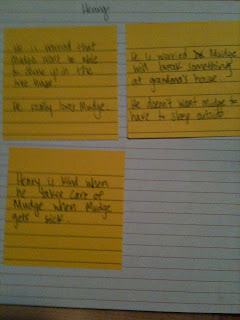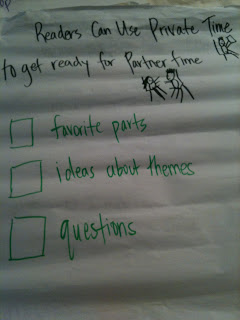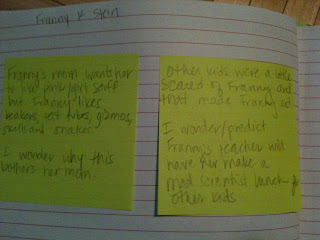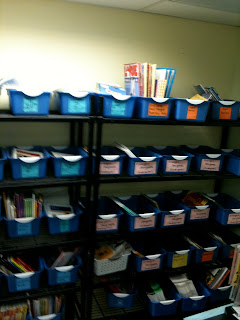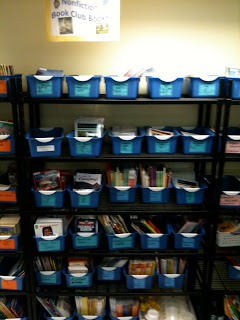Many teachers have been asking this week about the best ways to teach high frequency words. Here is my number one tip:
Give students many opportunities to read and write the word.
Several teachers have taught me fun activities to give kids opportunities to read and write their "words of the week." Here are some of my favorites.
Write It and Read It
Marie Clay developed a quick way to practice reading and writing a new word as part of a
reading recovery lesson. Teachers can use this same procedure whole class by passing out white boards and dry erase markers on the rug.
1. Make the word with magnetic letters and ask the kids to read it.
2. Kids make the word and read it as they write it in the upper left hand corner of their boards. Then erase.
3. Kids repeat the writing of the word in the upper right hand corner, in the bottom left corner, in the bottom right corner, and in the middle; reading it each time as they write it and after they write it.
4. In the end, you can invite kids to write it little at the center of the board, and then write it big. Prompt them again to say the word as they write it and then read it after they write it.
Find the Word in Shared Reading Books and Our Own Books
Many teachers see kids reading or writing their high frequency words in isolation but not independently. Shared reading is a great place to teach toward the transfer. If you need more support with planning shared reading with a big book across a week, read
Read It Again! For a list of shared reading big books at levels A-G, see the post on
Big Books and Small Copies for Emergent Readers. After reading a familiar big book, perhaps the third day out of a four or five day shared reading plan, invite kids to read the book with you again and search for the words of the week in the book.
- Use highlighting tape or wiki sticks to show the word.
- Place the word on a notecard or cut out piece of sentence strip on the easel so kids can match the word of the week that is on the card with the word in the book.
- Encourage students to find these words of the week in their own books.
- After you look for the words in the shared reading, go to the word wall (see Patricia Cunningham's work) with the class and place the words on the wall with the students. Ask for their input. Stacy is pictured below with her kindergarten class, placing their words on the wall. Her literacy coach Barbara says, "It's an event! It's so exciting!" She is right. Budding readers and writers get excited to know more words by heart. You can ask your kids some of the questions below as you put the word up on the wall:
- "Where should we put this word on our wall so we can find it when we need it?"
- "What is the first letter?" and "Where is that letter on our word wall?"
Words of the Week Hide and Go Seek
This is a fun one - for you and the kids! I saw it in Union County North Carolina in a kindergarten and fell in love with the amount of practice kids got to learn the words. Students will need a clipboard, a pencil, and a post-it for each of your words of the week.
1. Invite students to write each word of the week on a post-it. If you have three words of the week, let's say the, it, and he, then each child will write the on the first post-it, it on the second post-it, and he on the third post-it. Coach the students who need support with letter formation as they write.
2. Give students about 30 seconds to walk around the room and hide their post-its. Yes, you will have perhaps 75 post-its all over your tables, walls, and furniture! Encourage the kids to put the post-its in fun places, but not in places where someone might bump their head or hurt their arm reaching for it.
3. Call the kids back to the rug and invite them to get their reading fingers (their index or pointer fingers) ready to read the words all around the room.
4. Send the kids off to "seek." Tell them to look for post-its with the words of the week and when they find one, they should walk up to it, tap their reading finger under it (preferably under the first letter), and read it out loud. Then leave the post-it for the next person to read. Tell them to look for as many post-its as possible.
You can do this activity for a few minutes. Listen to the students as they practice. Encourage them to point under the first letter as they read. Some kids may need to carry a clipboard with the words on it already and match the words around the room to the words on the clipboard. This would be a point of access for just a few kids as needed. You can also encourage kids to look at charts and signs around the room to "seek" for the word too.










